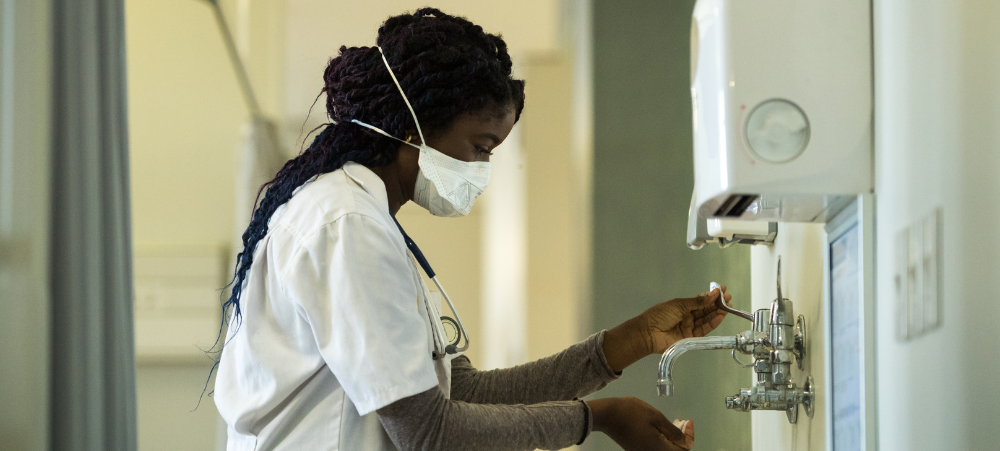Tuberculosis (TB) is a serious public health issue in South Africa. 280 000 people fell ill with TB during 2022 and, of these, an estimated 54 200 died from the disease. South Africa is one of the 30 high burden TB countries, contributing 87% of the estimated cases worldwide. According to the Department of Health, the main driver of TB infection is HIV, with around 48% of TB patients living with HIV.
As a member of the United Nations, South Africa has committed to reducing new TB cases by 80% by 2030, compared with 2015 levels. Clinical data presented by the World Health Organization (WHO) indicates that our country is meeting some of its targets but there are still too many people falling ill and dying.
‘It is important to remember that TB is curable’, says Dr Themba Hadebe, Clinical Executive at Bonitas Medical Fund. ‘However, we all need to be more aware of how contagious it is, the symptoms, the impact of the disease, the importance of getting medical attention and adhering to the treatment regimen.’
‘TB also has a big impact on the economy, not only in terms of healthcare expenses but lost productivity – due to absenteeism and the direct and indirect costs to business.
‘We know that not everyone has access to private medical care but public healthcare facilities offer free testing and treatment. If you test positive for TB, the Department of Health will provide the necessary medication. Crucial to overcoming this disease is to follow and complete the treatment regimen as advised by your healthcare giver.’
Some TB facts:
What is TB?
It’s a disease that mainly affects the lungs but can also be found in any other body organ. It is caused by an organism (germ) called Mycobacterium Tuberculosis which is found in the sputum (a mixture of salvia and mucus) coughed up by someone with TB of the lungs. The organism (germ) usually destroys the soft tissue of the lungs resulting in difficulty breathing and blood can be coughed up in severe cases. If untreated, TB can cause death.
How is TB contracted?
The disease is passed on from one person to another. The germs spread into the air via microscopic droplets if an infected person sneezes, coughs or releases saliva. The incubation period is 6 weeks.
TB Symptoms
If you are concerned about your health or having been exposed, you must get tested urgently.
Symptoms of the TB include:
- Excessive coughing – a cough that has been present for more than two weeks and is productive, (a cough that has phlegm)
- Chest pains
- Loss of appetite and weight
- Low grade fever
- Night sweats
- Chills
- Coughing up blood
In children the symptoms may present as a cough for 2 weeks or more, loss of energy and appetite and quite often a mild fever.
Who is most at risk of contracting TB?
- People living with HIV/AIDS
- Living in the same house as someone who has had or has TB
- Anyone who has had active TB in the last two years
- Those with diabetes
- Residents of informal settlements
- Children under five
- The undernourished
- Alcoholics and smokers
- Mineworkers
- Prisoners
- Pregnant women
Can you have TB and not be sick?
TB can be ‘latent’, in other words it’s in your body but not active and therefore you not capable of spreading it. However, if your immune system becomes weak, the TB can become active and you become ill. Having HIV/AIDS is a key factor in the TB epidemic which is why it is so important that the people living with HIV are screened and treated.
How is TB diagnosed?
Diagnosis of TB is quite complex since many symptoms can be quite similar to those of other common lung diseases. South Africa has moved towards more intensive and active methods of identifying cases, for example by screening all those attending primary health clinics.
TB testing and treatment is free. The Mantoux Tuberculin Skin Test (TST) and blood tests do not differentiate between latent and active TB which means a sputum sample needs to be taken or a chest X-ray.
Treating TB
TB is definitely treatable. However, medication must be started as soon as possible, and it must be taken regularly – as per the instructions. Also important is to finish the course of medication. It takes six months for TB to be cured completely but, within 2 weeks of starting treatment, the person will no longer spread the disease.
Treatment must be completed. If treatment is missed, the risk of a drug resistant strain of TB is possible, which is difficult to treat and requires a longer treatment period.
How can TB be prevented?
- People on TB medication must complete their treatment, this prevents the spread of TB
- Cover your mouth and nose when coughing or sneezing
- Wash hands with soap and water
- Immunise of all babies at a clinic within 1 year of birth
- Keep your body healthy by eating balanced meals and exercising
- Stop smoking
- Keep your windows open in your home if living with someone with TB – fresh air blows the TB germs away and sunshine kills the TB germs.
TB in the workplace
If any employees display TB symptoms, they should stay home and limit contact with others as much as possible until the results from a TB test are known. Once a person has been on TB treatment for 2 weeks, they are no longer infectious and can continue to work.
For 2025 we have a renewed Female Health Programme:In collaboration with CareWorks, it’s accessible to all female members aged 18 and above, with an emphasis on preventative care and early detection of female-specific health issues. In addition, we have an enhanced Maternity Programme to support expecting mothers. This includes early identification of and weekly engagement for high-risk pregnancies, post-childbirth care and associated mental health follow-up calls for new mums, given the prevalence of pre and postnatal depression. Also, milestone reminders for children under 3 and cover for antenatal vitamins through savings, day-to-day benefits or the Benefit Booster
Bonitas Medical Fund
0860 002 108
View Website: www.bonitas.co.za
- Mental health matters during the festive season: Let’s normalise getting help - December 11, 2025
- Neonatal jaundice, what is it and what happens if my baby is born with it? - December 8, 2025
- Smoking and pregnancy – should I quit - December 4, 2025





